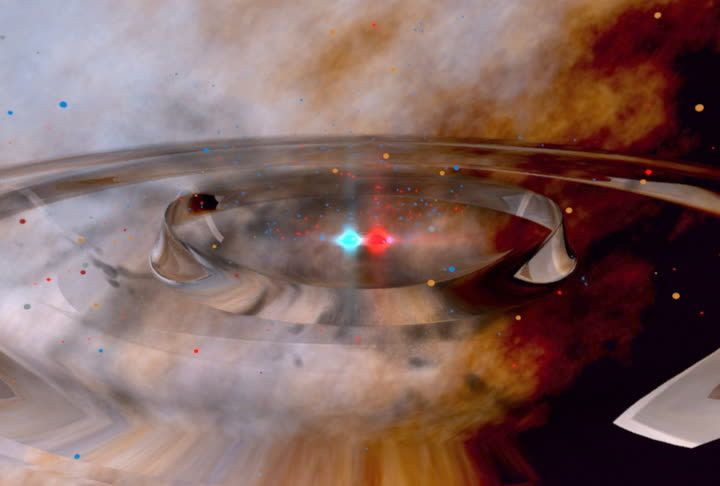Black Hole's Merger With Mysterious Object Stuns Scientists
KEY POINTS
- Astronomers detected gravitational waves from a black hole's merger with another object
- The object could possibly be the lightest black hole or the heaviest neutron star
- The true nature of the object remains a mystery
An international team of scientists detected a black hole merging with a mysterious object that has never been observed before. This unusual merger challenges the current understanding of such binary systems.
In August 2019, astronomers in Italy and the United States detected gravitational waves, dubbed GW190814, because of a merger between a black hole and a smaller object. What’s strange about the merger is that the smaller object’s mass places it in the so-called “mass gap,” which is between the heaviest known neutron stars and the lightest known black holes.
Specifically, the heaviest known neutron star is 2.5 times the mass of the Sun, while the lightest black hole is five times the mass of the Sun. The object, however, is 2.6 times the mass of the Sun, placing it outside of the known masses of neutron stars and black holes.
Such an object has never been observed before, and since it was devoured by the black hole, the scientists could no longer observe it.
According to the researchers, it is possible that the object was a light black hole. However, there are so far no established theories about how such objects form.
It could also be a new kind of neutron star that is much heavier than the other known ones. If this is the case, then the current theories about how neutron stars form may have to be revised.
"Mergers of a mixed nature — black holes and neutron stars — have been predicted for decades, but this compact object in the mass gap is a complete surprise. We are really pushing our knowledge of low-mass compact objects," study co-author Vicky Kalogera of Northwestern University said, according to a news release from Caltech. "Even though we can't classify the object with conviction, we have seen either the heaviest known neutron star or the lightest known black hole. Either way, it breaks a record."
Another interesting thing about the merger was how uneven it was, with the black hole being significantly more massive than the object it was merging with. As mentioned, the mysterious object was 2.6 times the mass of our Sun, while the black hole it was merging with was 23 times the mass of the Sun.
"The source has the most unequal mass ratio yet measured with gravitational waves," the researchers wrote in their study published in The Astrophysical Journal Letters.
This uneven ratio makes it harder for the scientists to determine whether it is a black hole or a neutron star. Typically, neutron star collisions create light while black hole collisions don’t. This collision between the black hole and the mysterious object did not create light, partly because of its distance — 780 million light years away.
However, even if the object was a neutron star, it was so much smaller than the black hole that it would have been devoured by the latter very easily and would not be able to give off any light.
As such, the true nature of the object remains a mystery.
"This is the first glimpse of what could be a whole new population of compact binary objects," study co-author Charlie Hoy of Cardiff University. "What is really exciting is that this is just the start. As the detectors get more and more sensitive, we will observe even more of these signals, and we will be able to pinpoint the populations of neutron stars and black holes in the universe."

© Copyright IBTimes 2024. All rights reserved.






















